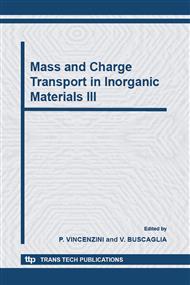p.48
p.54
p.63
p.73
p.79
p.89
p.93
p.98
p.104
Water Diffusion in Silicate Glasses and Melts
Abstract:
Knowledge on diffusion of water in glasses and melts is important for glass sciences as well as for Earth sciences. The ranges of water contents differ widely in both research domains. Industrial glass contain typically less than 0.1 wt% H2O whereas natural glasses may even contain up to 10 wt% H2O. Dissolved water strongly modifies physical and chemical properties of the melts and, hence, water diffusion studies at low water contents often cannot be transferred to high water contents and vice versa. Pressure effect on water diffusion, on the other hand, is small so that high pressure data can be applied also at ambient pressure without significant error. At low water contents the assumption of constant water diffusivity is often justified whereas at high water contents the H2O diffusivity increases strongly (often linearly or exponentially) with water content. Combining experimental data over a wide range of water contents allows getting deeper understanding of the mechanisms of water diffusion and of the effect of dissolved water on melt structure. In this paper an overview is given on experimental investigations on water diffusivity in aluminosilicate and silicate systems. Effects of base compositions and water content on water diffusivities are discussed. New experimental results for water diffusion in soda lime silica glass, float glass and borosilicate glass are presented.
Info:
Periodical:
Pages:
79-88
Citation:
Online since:
October 2006
Authors:
Price:
Сopyright:
© 2006 Trans Tech Publications Ltd. All Rights Reserved
Share:
Citation:


